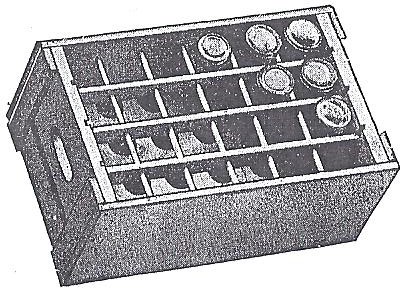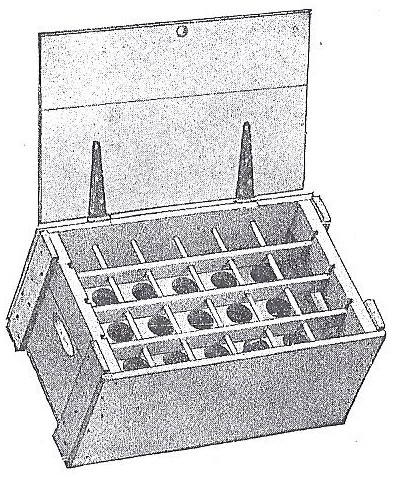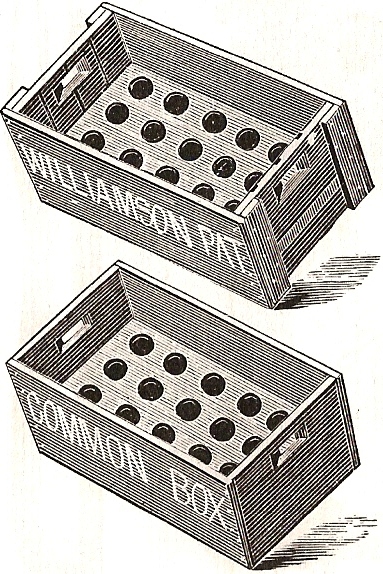Shipping Cases
Wooden
shipping cases for
PATENT SHIPPING CASES
Patent shipping cases were fitted with sturdy lath or lath and dowel partitions (known as a “rack”) to prevent the bottles from rubbing against other bottles and causing breakage. They were primarily used to ship bottled goods to towns via railroad, and often fitted with hinged lids.


Charles Sulz included a brief, general discussion of "Boxes and Crates" in his 1888 book, A Treatise on Beverages or The Complete Practical Bottler, suggesting:
They should be of convenient size, strong and durable but light, and divided into partitions for conveniently placing each bottle. False bottoms are required for neck downwards, to prevent the bottles touching bottom...The partitions of the boxes or crates must be made so deep that the bottles cannot knock together, and that the bottles are always below the top of the boxes. The shipping crates should be closed by spring locks or other suitable means to prevent their getting opened while on their way, but to allow their being opened easily at their place of destination without using violent means, as chisel, etc., and thus break the locks and spoil the crate.
Closed or tight bottoms of crates should have suitable opening to allow the contents of burst bottles to flow off and allow some ventilation.
CITY DELIVERY CASES
Although city delivery cases were somewhat smaller than patent shipping cases, they also held 24 bottles. They didn’t have partitions or lids, deemed unnecessary because the bottled goods were intended for short delivery trips to local customers, typically by horse drawn wagon.
These two city delivery cases were advertised in the 1889 W. H. Hutchinson & Son Manufacturers and Dealers in Bottlers Supplies catalog:

If our customers want Soda Boxes like the above, we can furnish them at from 18 to 25 cents knocked down, that is, already to be nailed together, delivered at the depot in Chicago.
You should accompany such orders with bottles to measure by.
The price of boxes is subject to variation. The price given these is the present price.
 HutchBook.com
HutchBook.com